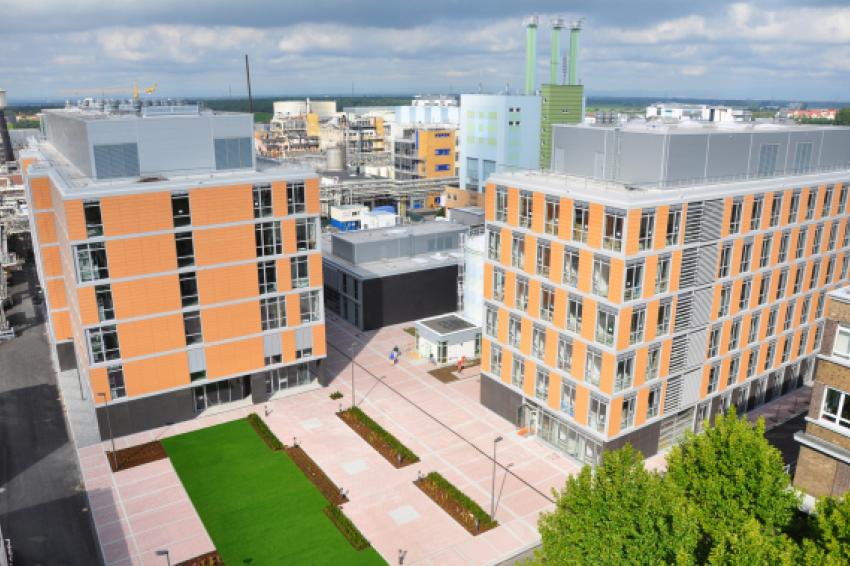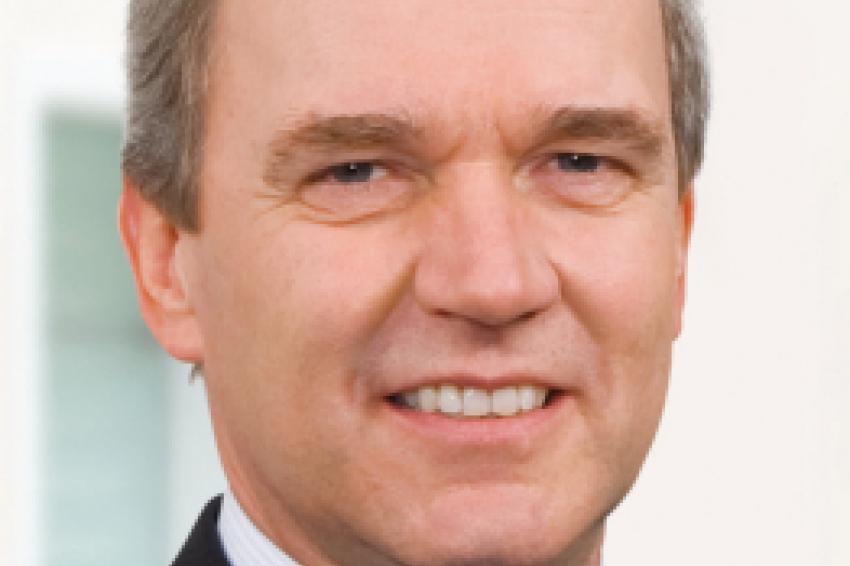Merck Chemicals: New Material Research Center
24.09.2010 -
With the opening of the new Material Research Center (MRC), German pharmaceutical and chemical company Merck is underscoring the importance of chemical research at its corporate headquarters in Darmstadt. The research and development center comprises two six-story buildings as well as a pilot plant with a cleanroom and offers 340 employees a modern working environment. The building complex cost approximately € 50 million, making it the single largest R&D investment within Merck's Chemicals business sector to date.
The activities performed in the Material Research Center include research and development work on innovative liquid crystals for flat panel displays in televisions and computer monitors as well as materials for organic light-emitting diodes (OLEDs) and light-emitting diodes (LEDs). Further research areas are materials for mobile energy storage systems, for example for use in hybrid or electric vehicles, as well as microbiological test systems for detecting pathogenic bacteria in food. Previously, the majority of the R&D center's staff was located at three different sites: Darmstadt, Frankfurt and Mainz. The new center enables them to readily exchange expertise and ideas with each other. During a tour of the building, Chancellor Merkel was informed first-hand about Merck's research areas of focus, especially in the area of light generation using OLEDs.
A further step to secure the future viability
During the inaugural ceremony, Dr. Karl-Ludwig Kley emphasized that innovations are the lifeline of the company. Alluding to the many years of basic research conducted by Merck chemists in the field of liquid crystals, Kley said: "Innovations by our predecessors are what make us strong today." Many of these successful developments originated in Darmstadt, Kley explained. "Partnering and networking have always been two of our hallmarks. Darmstadt has always played a key role here. And we want it to stay that way. That is why we decided to make this major capital investment here." In 2009, Merck spent more than € 1.3 billion on research and development in both segments, Chemicals and Pharma. Kley described the opening of the new Material Research Center as "a further step toward securing our future viability."
High research spending ratio in Chemicals
At a press conference, Dr. Bernd Reckmann, Member of the Executive Board responsible for the Chemicals business sector, and Dr. Thomas Geelhaar, Chief Technology Officer Chemicals, presented the research areas of the MRC. Reckmann said that the new building is the focal point of research, knowledge and innovation within Chemicals research at Merck. "With the new research center, we have united excellent researchers who had previously been working in Frankfurt, Mainz and Darmstadt."
According to Reckmann, Merck will do everything possible to further bolster its innovative strength. "Measured against total revenues of € 1.9 billion for the Chemicals business sector in 2009, our research spending ratio is 7.3 %, which is clearly higher than the average of other chemical companies," he said. Darmstadt headquarters remains a crucial part of this equation: "In 2009, Germany accounted for € 103 million of our total Chemicals research spending of € 142 million."
Geelhaar used illustrative examples to explain how Merck is working with its customers to develop solutions for urgent future issues such as energy, communication, mobility, health and safety.
Energy-efficient buildings
The three research buildings that comprise the MRC offer modern working facilities with a surface area of around 11,000 square meters. Both laboratory buildings have a floor available for expansion at a later point in time. Architects, project managers and the general contractor have created a laboratory workspace that promotes communication and direct contact. Documentation rooms and offices are located along a light-filled facade. The transparent and open design will encourage communication among employees. Areas for exchanging ideas as well as meeting rooms are directly accessible everywhere. A high degree of importance was attached to the highly energy-efficient building technology. Excellent heat and sun protection, high-efficiency fans and pumps, reduced airflow and energy consumption during non-working hours as well as high-efficiency heat recovery from exhaust air ensure that CO2 emissions will be 80 % lower than in comparable laboratories.






